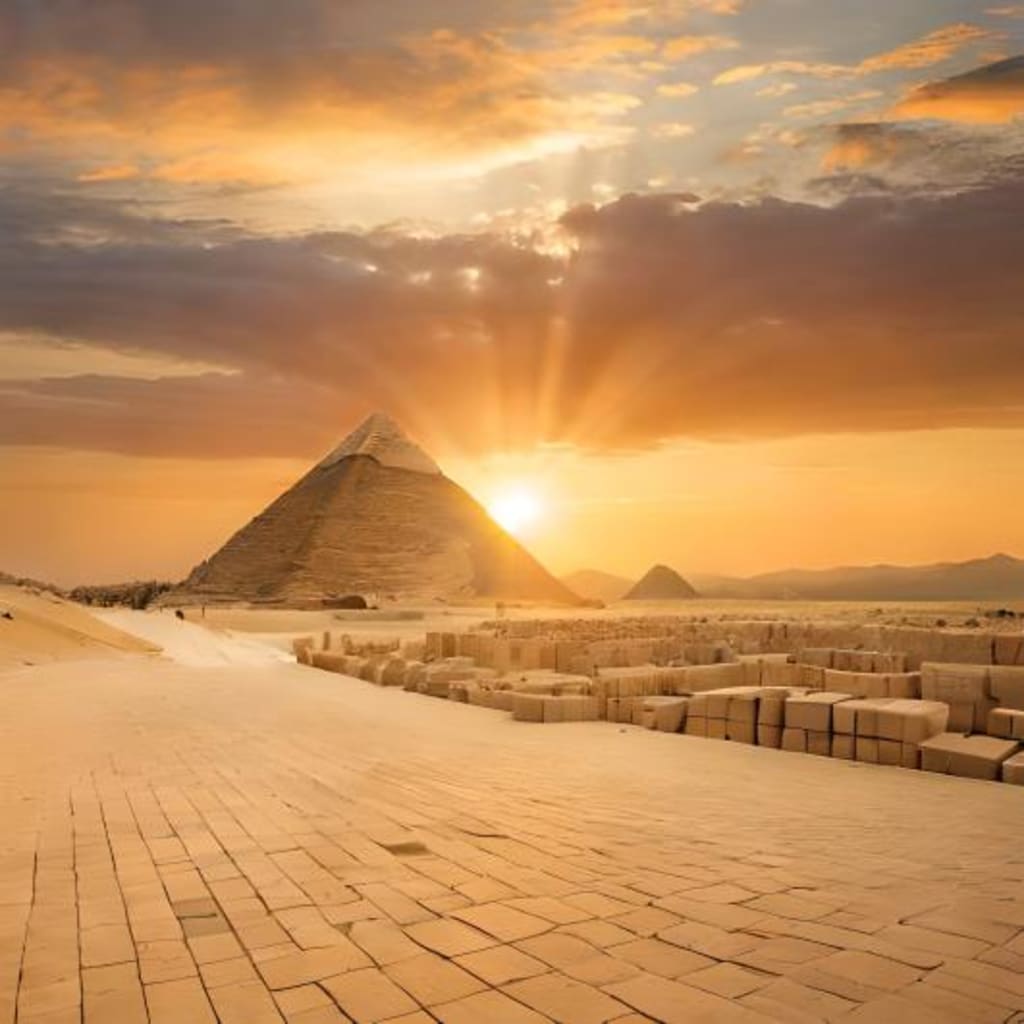Uncovering the Secrets of the Pyramids
The Mysteries of Ancient Egypt

Egyptian pyramids are one of the most significant ancient structures globally and still capture people's imagination today. These massive structures have captivated people since their construction thousands of years ago. While researchers have made significant strides in understanding the construction and purpose of pyramids, many secrets remain. In this article, we will explore the mysteries of ancient Egypt and uncover some of the secrets of the pyramids.
The History of the Pyramids
Before delving into the mysteries of the pyramids, it is essential to understand their history. The earliest known pyramid, the Step Pyramid of Djoser, was built around 2630 BCE during the third dynasty of the Old Kingdom. The pyramids' construction spanned over 2000 years, with the last pyramid, the Pyramid of Giza, built around 2500 BCE during the fourth dynasty. The pyramids served as tombs for pharaohs and their consorts.
The Construction of the Pyramids
The construction of the pyramids remains one of the biggest mysteries in ancient architecture. Researchers believe that it took approximately 20 years to construct the Great Pyramid of Giza, using over 2.3 million stone blocks weighing up to 80 tons each. How ancient Egyptians transported these massive blocks remains unclear, and theories range from ramps to giant cranes. Moreover, the alignment of the pyramids to the stars remains a mystery, suggesting that the Egyptians had advanced astronomical knowledge.
The Purpose of the Pyramids
The pyramids were constructed as tombs for pharaohs and their consorts, who believed that they would become gods in the afterlife. The Egyptians believed that the pharaohs' souls would ascend to the heavens, where they would join the gods. They believed that the pharaohs needed a physical body to return to their tomb and continue to live in the afterlife. Moreover, the pyramids' location and alignment with the stars suggest that they may have had astronomical significance.
The Curse of the Pyramids
The curse of the pharaohs is a well-known legend that states that anyone who disturbs a pharaoh's tomb will be cursed with bad luck, illness, or even death. The curse first gained attention after the discovery of the tomb of Tutankhamun by Howard Carter in 1922. Carter's team soon experienced a series of unfortunate events, including the death of several team members. While many researchers believe that the curse is a myth, the legend persists to this day.
The Hidden Chambers
Despite extensive research and exploration, there may still be undiscovered chambers within the pyramids. Recently, a team of scientists used muon radiography to scan the Great Pyramid of Giza, discovering a void about 100 feet long above the Grand Gallery. The void's purpose remains a mystery, and researchers continue to investigate.
The Sphinx
The Sphinx is another ancient structure located near the pyramids. It is a giant statue of a mythical creature with the body of a lion and the head of a human. The Sphinx's purpose remains a mystery, and theories range from a symbol of the pharaoh's power to a guardian of the pyramids.
The Egyptian Hieroglyphs
The Egyptians left behind a wealth of information in the form of hieroglyphs. These ancient scripts have provided researchers with valuable insights into the Egyptian civilization, including their culture, religion, and daily life. However, many hieroglyphs remain undeciphered, and their meanings continue to be a mystery.
The Afterlife
The Egyptians believed in an afterlife and spent a great deal of time and effort preparing for it. The pyramids served as tombs for pharaohs and their consorts, and they were filled with treasures, food, and other items needed for the pharaoh's journey to the afterlife. The Egyptians also believed in judgment after death, where the soul would be weighed against a feather. If the heart was lighter than the feather, the soul would enter the afterlife. If the heart was heavier, it would be devoured by a monstrous creature.
The Legacy of the Pyramids
The pyramids remain an enduring symbol of the ancient Egyptian civilization, and their legacy continues to influence modern architecture and culture. They have been studied by researchers for centuries, and new discoveries are still being made. Moreover, the pyramids' mysterious nature continues to capture people's imaginations, leading to various myths and legends.
In conclusion, the pyramids remain one of the world's most significant ancient structures, and they continue to fascinate researchers and the general public alike. While significant progress has been made in understanding the construction and purpose of the pyramids, many secrets still remain. However, continued research and exploration will undoubtedly uncover new insights into the mysteries of ancient Egypt and the enigmatic pyramids.
FAQs
Why did the Egyptians build the pyramids?
The pyramids were built as tombs for pharaohs and their consorts, who believed that they would become gods in the afterlife.
How were the pyramids built?
The construction of the pyramids remains a mystery, but theories range from ramps to giant cranes.
What is the curse of the pyramids?
The curse of the pharaohs is a well-known legend that states that anyone who disturbs a pharaoh's tomb will be cursed with bad luck, illness, or even death.
What is the purpose of the Sphinx?
The Sphinx's purpose remains a mystery, and theories range from a symbol of the pharaoh's power to a guardian of the pyramids.
What is the legacy of the pyramids?
The pyramids remain an enduring symbol of the ancient Egyptian civilization, and their legacy continues to influence modern architecture and culture.
About the Creator
Enjoyed the story? Support the Creator.
Subscribe for free to receive all their stories in your feed. You could also pledge your support or give them a one-off tip, letting them know you appreciate their work.






Comments
There are no comments for this story
Be the first to respond and start the conversation.